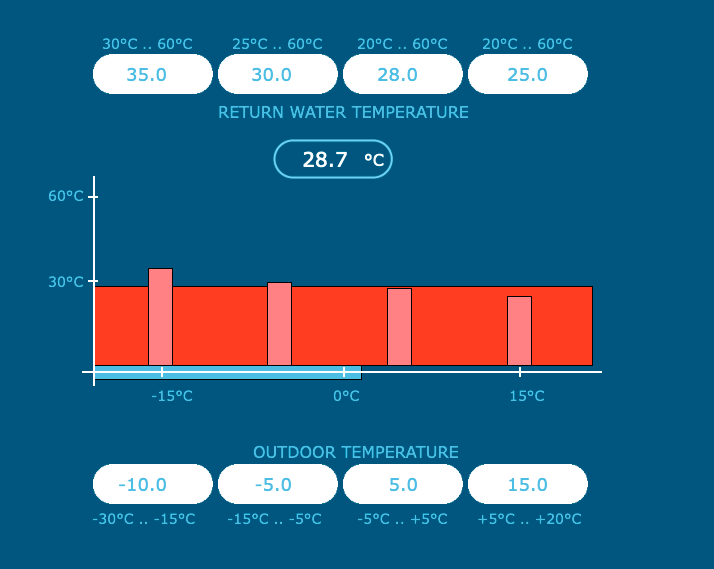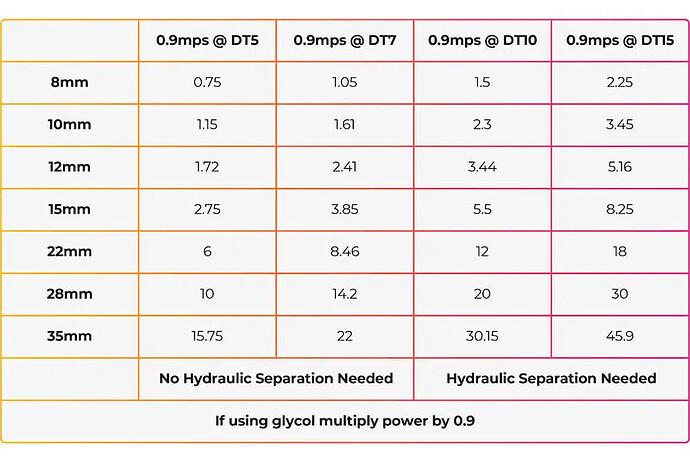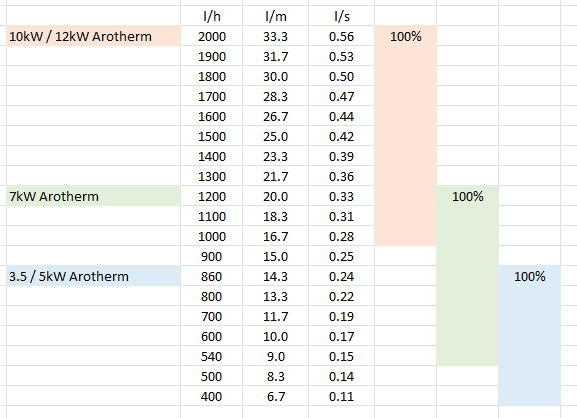So just as some background, the start of March 2022 our boiler died, so seemed like a good idea to get an ASHP. Finally getting one installed in Sept 2022. Getting quotes was difficult plumbers would come and visit, but not quote, or would quote, but quote for 12/16kW units.
So ended up going with a localish company, who ended up subcontracting the ASHP install to a company in Wales. They advised no radiator upgrades required and a flow temp of 40˚C. So at the time it was the best option available and not having heating/hot water since March it was kind of getting desperate.
So some stats on the property.
1950’s 3 bed semi-detached, solid walls 330mm thick poured concrete. No internal/external wall insulation.
Heat required at -3C is 6.53kW
Total floor area is 72m2
No UFH
Heat loss per room @ -3C is as follows
Living Room 1954.58
Kitchen 947.6
Study 1084.04
Landing 144.29
Bathroom 660.69
Bedroom1 597.59
Bedroom2 509.54
Bedroom3 628.97
Giving a total loss of 6527.3
After the install and a failed commissioning (secondary pump not connected on house side of buffer) we had heat and hot water. It quickly became evident that it was going to use huge amounts of electric to run. The worst bit being though some rooms never got warm enough. So (for me at a least) a steep learning curve was undertaken in learning more about ASHP installs, especially to increase performance (so the house was actually warm when cold outside), along with the hope to be able to run of battery power predominately.
Changes I’ve made over the last 12months.
Fitted primary pro insulation to external pipes (7m run) this made quite a large impact.
Central heating main runs were in 15mm copper, I’ve upgraded these to 22mm PEX the non-coiled plastic pipe stuff. This dropped the flow temp by circa 5deg. All radiators are now directly off the 22mm other than the 4 in the living room, which has 22mm to ground level (comes in from the first floor) which then feeds into 15mm to the radiators.
Upgraded radiators working towards a delta a 10 ? A flow temp of low 30’s and a room temp of 20˚C for the ground floor and 18/19˚C for the bedrooms.
Upgrades are as follows (all K2 unless stated otherwise)
Living room
1600 x 750 x2 (798w)
2400 x 500 (467w)
1600 x 900 (482w)
Total w 1747
Kitchen
1000 x 900 (301w)
800 x 900 (241w)
Total w 542
Study
1000 x 700 x2 (1722w)
Bathroom
1200 x 700 (303w)
Bedroom 1
900 x 600 (690w)
Bedroom2
900 x 600 P+ (88w)
Bedroom3
900 x 600 (690w)
Landing
800 x 600 P+ (88w)
Due to space/lack of wall for any more radiators a delta 10 wasn’t really possible in the worst case, so ended up being more like a delta 12.5-15 in the end.
The upside is the house warms up much quicker, no cold spots (as per last year)
I installed heatpump monitoring kit in Febuary this year which has been very insightful and helpful. I have no idea what COP I was doing during the winter last year, but I do know that my 2 8.2kWh batteries on colder days would be drained before noon, now though they’ll last through to late afternoon/early evening.
Ideally, I’d like to improve my COP as it’s still not the greatest to say the least (in comparison to other systems), just to make the batteries last that bit longer. I don’t know if that’s an achievable goal or not really, or how I would go about improving it some more.
The pipe run from the ASHP to the furthest away radiator is circa 26m of which 4m of that is 15mm copper (at the end). Swapping out the 22mm plex to 22mm copper (circa 10meters), would obviously be less restrictive, but if of any benefit I don’t really know.
So just after pointers what to investigate for improving next really.
Of course the stats for the ASHP in question is here
https://emoncms.org/app/view?name=MyHeatpump&readkey=3eee4128b572e459bf65f2deaf9707d7
Lots of people go on about a heating curve, mine will either run fully automatically (weather comp and dynamic curve, or the attached image shows manually set cure + weather comp. All temp settings can be manually input on the screen.
Thanks for any thoughts.






